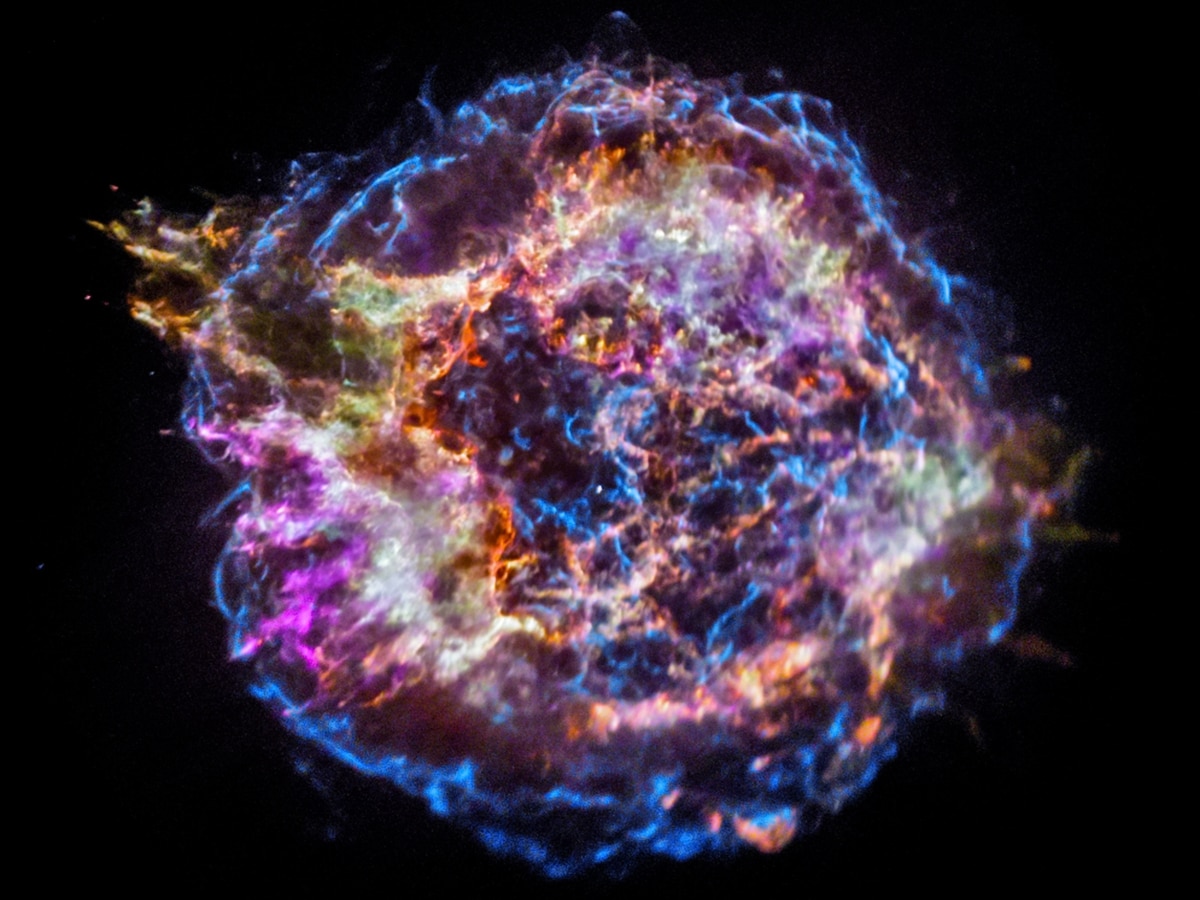'We Are All Made Of Stardust': How Stellar Elements Expand Into The Cosmos
All the beauty seen on Earth is a result of some of the most cataclysmic events in the cosmos. Neither life, nor Earth, would have formed without these events occurring in stellar factories.

"We are all made of stardust" is a commonly used phrase. The phrase has a scientific as well as a philosophical meaning behind it because not only does it denote the fact that every living being on Earth is made up of the remnants of stars, but also that all organisms share a common heritage, no matter where they come from. Almost all the elements in our bodies, from the carbon in our hereditary material, DNA (deoxyribose nucleic acid) to the calcium in our bones, were produced when stellar nurseries formed and stars met their violent deaths.
It is because of stars that the building blocks for humans, animals, plants, and the entire Earth exist. Rewinding the universe back almost to the very beginning would lead us to a time when there was just a sea of hydrogen, helium and a little bit of helium.
How were the first generation of stars formed?

The first generation of stars were formed from hydrogen, helium and lithium. The extreme heat and pressure inside a star's core causes these elements to fuse together, resulting in the formation of new elements.
Hydrogen existed since shortly after the Big Bang
DNA is made up of carbon, hydrogen, oxygen, nitrogen and phosphorus. Only hydrogen has existed in the universe since shortly after the Big Bang. The rest of the elements are made by stars.
ALSO READ | Rosalind Franklin Was An Equal Contributor, Not A Victim, In Discovery Of DNA Structure, Say Scientists
Origins of different elements in the universe

Stars generate all these elements and release them into the cosmos when they die.
The different origins of elements are the Big Bang, dying low-mass stars, white dwarf supernovae, radioactive decay, cosmic ray collisions, dying high-mass stars, and merging stars. Some elements are human-made.
Hydrogen and helium were generated after the Big Bang, lithium, carbon and nitrogen are some of the elements produced from dying low-mass stars, beryllium and boron are some of the elements created as a result of cosmic ray collisions, oxygen, fluorine, neon, sodium, magnesium, aluminium, silicon, phosphorous, chlorine, potassium and scandium are some of the elements made from dying high-mass stars, sulphur, argon, calcium, titanium, vanadium, chromium, manganese, iron, cobalt, nickel, copper and zinc are some of the elements generated from white dwarf supernovae, technetium, polonium, astatine, radon, francium, radium and promethium are some of the elements created as a result of radioactive decay, ruthenium, rhodium, silver, indium, antimony, iodine, xenon, caesium, platinum and gold are some of the elements produced from merging neutron stars, molybdenum, tin, tellurium, hafnium, tungsten, mercury and lead are examples of elements made from a combination of dying low-mass stars and merging neutron stars, and rutherfordium, dubnium, hassium, copernicium, and curium are examples of some human-made elements.
Elements formed from medium-mass stars

There is a limited fuel supply in each star. According to NASA, when a medium-mass star runs out of fuel, it swells up and shrugs off its outer layers, and only a small, hot core called a white dwarf is left behind.
The cast-off debris of the star includes elements such as carbon and nitrogen. These elements expand out into the cosmos, possibly destined to be recycled into later generations of stars and planets. From the ashes of stars, new life may be born.
Elements formed from massive stars

Massive stars have a more violent fate than medium-mass stars. Stars, for most of their lives, are balanced between the outward pressure created by nuclear fusion and the inward pull of gravity. A massive star is completely thrown out of balance when it runs out of fuel and its nuclear processes die down. As a result, the star gets crushed under its own gravity.
This results in an explosion, which is known as a supernova.
Supernova explosions create intense conditions which can generate even more elements. Supernovae flung into space elements such as oxygen, which organisms breathe, and magnesium and potassium, which are essential minerals.
Elements formed from double-star systems

Supernovae not only occur in massive stars, but can also happen in binary or double-star systems. In these systems, a white dwarf often steals material from its companion, thrown by everything off balance leading to a cataclysmic supernova.
NASA's Nancy Grace Roman Space Telescope will study these stellar explosions to find out what is speeding up the expansion of the universe.
Calcium, zinc, manganese, and iron are produced as a result of supernovae occurring inside binary star systems. Calcium is the mineral we require the most in our bodies, zinc and manganese are trace minerals needed in less amounts, and iron is an element found in our blood and produces haemoglobin. Iron also makes up Earth's mass.
Elements formed from neutron stars
A supernova leaves behind a black hole or a neutron star, which is the superdense core of an exploded star.

Elements formed from cosmic rays

Some elements are indirectly produced from stars. For instance, cosmic rays, which are nuclei that have been boosted to high speeds by the most energetic events in the universe, collide with atoms and break them apart, forming simpler elements. Some examples of elements which were produced from breaking star-made atoms into smaller ones are boron and beryllium.
Elements formed from radioactive decay
Around half a dozen elements in the universe are created by radioactive decay, some of which are radioactive, meaning that their nuclei are unstable. Radioactive elements naturally break down to form simpler elements by emitting radiation and particles. Radium was created through radioactive decay.
Human-made elements
Other elements in the periodic table are made by humans in laboratories by slamming atoms of lighter elements together at super high speeds to form heavier ones. Elements made by stars can be fused together to create exotic, short-lived elements such as seaborgium and einsteinium.
Stars are the reason behind the beauty of the cosmos
All the beauty seen on Earth is a result of some of the most cataclysmic events in the cosmos. Neither life, nor Earth, would have formed without these events occurring in stellar factories.
NASA's Stardust spacecraft, which returned to Earth in 2006, brought tiny particles of interstellar dust that originated in distant stars, light-years away. This was the first stardust to ever be collected from space and returned for study.
NASA's Nancy Grace Roman Space Telescope will help scientists learn more about how elements were created and distributed throughout galaxies, and will explore many other cosmic questions.






































